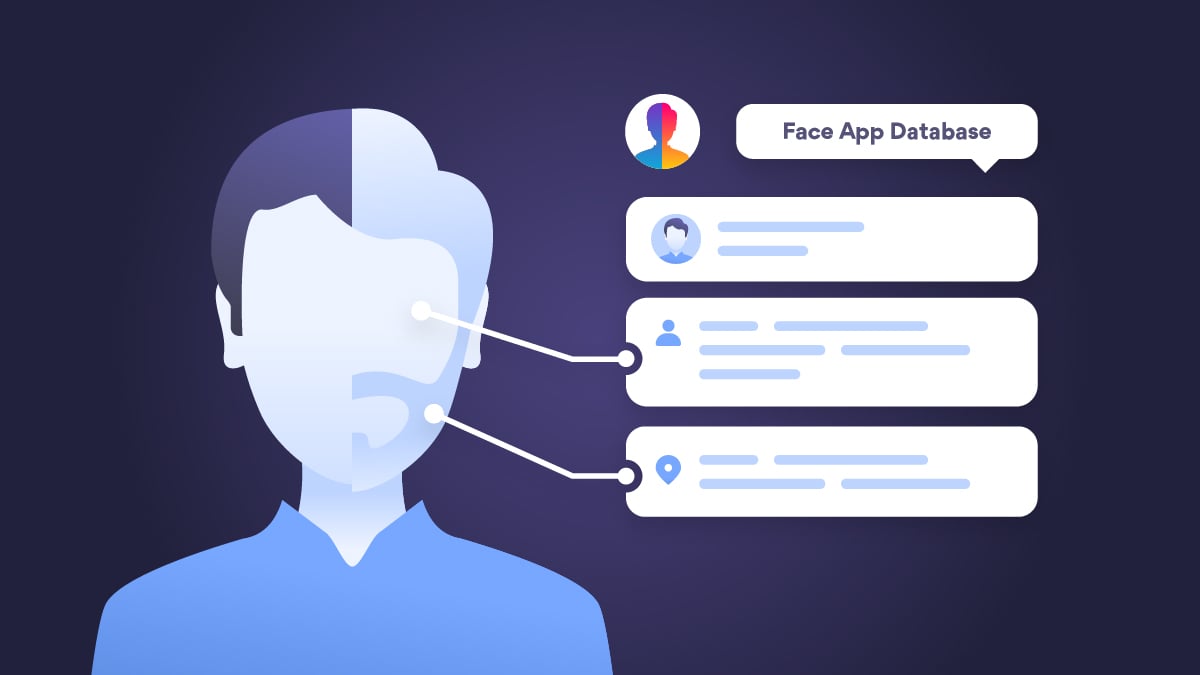What is a filter bubble, and how do you burst it?
Posts on social media represent diverse perspectives, religious beliefs, and political opinions, yet you usually see only the point of view that aligns with yours. You can blame (or thank) filter bubbles for that. It’s crucial to be aware of filter bubbles to maintain a balanced view of the world and think critically, so let’s see what a filter bubble is and how to burst it.
Contents
What is a filter bubble?
Filter bubble definition
A filter bubble is a phenomenon when your opinions, beliefs, and preferences influence the information you encounter online.
Internet activist Eli Pariser coined the term “filter bubble” circa 2010. He noticed that search engines, social media sites, and other platforms use algorithms to personalize and present the content based on your previous activity, usually filtering out the content that offers contrasting views or opinions.
Because of the filter bubble, you mostly see the posts reinforcing your beliefs. Diverse content that could challenge what you believe in is just not there. That’s why the filter bubble skews the information you encounter online and can distort your perception of reality.
Here’s Pariser’s TED talk explaining the concept:
How does a filter bubble work?
Internet search engines and social media platforms usually track your activity on their site and, with the help of third-party cookies, also off their site. They can log:
- The posts you see and interact with.
- The time you spend on each post before moving on.
- Your location (based on GPS or your IP address).
- Your web searches and browsing history.
- Websites you visit before coming to their site.
- Websites you visit after leaving their site.
- Anything and everything else you do on their site.
Platforms use this information to deduce many things about you – from your age and gender to your relationship status and hobbies. Add it to the information you provide to the companies willingly by posting, commenting, or simply registering for their service, and you get a one-of-a-kind personalized profile. Checking what Google knows about you is an excellent example of that.
After gathering enough information, algorithms make assumptions about the content you should see next to stay on the platform longer.
- If what you see conforms to your beliefs, you’ll probably like the content and stay on the platform longer.
- If what you see contrasts your beliefs, you might leave, and the platform loses ad or data mining revenue.
Of course, platforms prefer the first option better.
The result is an isolated online experience where you only see the information that reinforces your views, limiting access to diverse content and potentially contributing to misinformation.
Information sources should not be biased – you need to hear both sides of the story. Journalist ethics, for example, were created to show an unbiased, complete picture, yet there’s none of that online if you end up in a filter bubble.
Examples of filter bubbles
Web search results and social media feeds are the most common examples of online filter bubbles. But filter bubbles now exist beyond these platforms. Algorithms dictate suggested movies and series on streaming sites, songs on Spotify, videos on YouTube, and even what content you see first on some news sites.
You can test it yourself. Do an online search or watch a video on YouTube and ask your friend to look up the exact things. Their search results or suggested videos won’t necessarily match what you experienced.
Filter bubbles are even more evident on social media platforms. Even if you like the same accounts and follow the same people, you and your friend may have different posts on your feeds.
Sometimes you don’t need algorithmic help. You can create a bubble for yourself, e.g., if you read news sources, listen to podcasts, or watch TV channels presenting only one viewpoint. In this case, you end up in an epistemic bubble since it’s not the algorithms’ fault what information you get to consume.
Moreover, such bubbles can exist offline. Your social circle may share the same political outlook, interests, or religious views, thus creating a bubble – you won’t be exposed to diverse perspectives or even know what reality looks like outside of your family and friend group.
The impact of filter bubbles
A filter bubble can have both positive and negative impacts, usually depending on what your filter bubble consists of.
The positive impact of filter bubbles
Filtering information based on preferences exists for a reason – filter bubbles have some clear benefits:
- Personalization. Personalized content can improve the overall user experience. You are more likely to find relevant information and engaging content when it’s tailored based on your past behavior. For example, if you love cooking and get mostly recipe videos on TikTok, it’s a win-win for you and TikTok.
- Improved efficiency. Personalized content can also help you find what you’re looking for faster. For example, Google search can show you news about your city or state even when you don’t specify it in the search query.
- Increased engagement. If you enjoy the content on the platform, you’re more likely to continue using it instead of hopping through sites or looking for alternatives. It benefits you, your social circle, and the platform itself.
- Reduced information overload. A filter bubble can help manage the overwhelming amount of information online by narrowing down the content to what is most relevant and valuable for you. For example, if you’re a jazz fan, Spotify won’t be suggesting or auto-playing metal music.
- Personal empowerment. A filter bubble can give you a sense of control over the content you see, as it prioritizes the topics that matter most to you.
The negative impact of filter bubbles
Despite the positive impact, a filter bubble can distort the way we see reality:
- Limited exposure to diverse perspectives. A filter bubble can create echo chambers. You only come across content reinforcing your beliefs and opinions, making engaging in conversations with people with contrasting views more challenging. It can contribute to a lack of empathy and understanding between different groups, potentially leading to social division and polarization.
- Cognitive biases. When algorithms create a filter bubble based on flawed data or biased assumptions, they can strengthen existing prejudices and lead to unfair or discriminatory results. A filter bubble can also encourage confirmation bias, which is the tendency to seek out and interpret information in a way that confirms pre-existing beliefs. Critical thinking suffers, and an inability to consider alternative viewpoints builds up.
- Lack of serendipity. A filter bubble limits the opportunities to discover new and unexpected content, limiting creativity and innovation.
- Propaganda and manipulation. Sometimes, a filter bubble can manipulate your behavior or opinions by promoting content that aligns with a particular agenda. The Cambridge Analytica scandal is the most famous example of that.
- Fake news and misinformation. A filter bubble can speed up the spread of fake news and misinformation. People are less likely to encounter information that challenges their (false) beliefs, leading to impaired critical thinking and an inability to distinguish between accurate and inaccurate information. It can have negative consequences for individuals and society as a whole.
- Reduced exposure to important information. A filter bubble prioritizes content that is entertaining or popular over content that is important or relevant. It leads to a lack of exposure to critical information, such as uncomfortable news or current events.
- Privacy concerns. Platforms collect and analyze your data to put you in a filter bubble. It raises privacy concerns, especially when you’re unaware of or don’t consent to the use of your data.
How to avoid filter bubbles
If you value critical thinking and aim for a more balanced understanding of the world, it’s crucial to be aware of filter bubbles and avoid them.
Here are some proactive measures you can take to diversify your online experiences and burst the filter bubble if you already find yourself in one.
Seek out content diversity
Engage in active search and discovery. Rather than relying on algorithms to present information to you, actively seek out information and discover new sources of content:
- Visit news sites that don’t lean toward one ideological or political spectrum.
- Follow people and join groups outside of your usual information environment.
- Check sources from different political affiliations, cultures, and countries.
It can broaden your horizons and expose you to new ideas and viewpoints.
You can use RSS feeds to manage all that content diversity. RSS feeds allow you to subscribe to different sources of information and receive updates when new content is posted. It can help you stay informed without relying on personalized algorithms or social media platforms.
Evaluate and fact-check your sources
Critically evaluate the content. Don’t take everything you read, watch, or hear for granted. Fact-check content, be aware of the biases and perspectives of its sources, and consider the validity and reliability of the information.
If it sounds tiring, it doesn’t have to be – you can always use fact-checking tools and websites to verify the accuracy and reliability of the information presented.
Take control of your browsing experience
A few new browsing habits and tricks can help avoid personalization that creates a filter bubble.
- Disable customization and personalization. Usually, you can disable personalization on social networks and search engines. If not for all content, then at least limit ad tracking. It can reduce personalization and expose you to information outside your filter bubble.
- Browse incognito and avoid logging into your accounts. Browsing incognito, as long as you don’t log in to your accounts, can help prevent your search history from being tracked and used to personalize your information environment.
- Block third-party cookies. Third-party cookies enable sites to track you even when you’re not on their site. Blocking them can help prevent such platforms from getting additional information for personalization and stop retargeting ads.
- Opt for a private search engine. Private search engines, such as DuckDuckGo or StartPage, don’t track your search history or use it for personalized search so that you can get more diverse results.
- Switch between multiple search engines. Using multiple search engines can also help you see different results for the same query and prevent you from being trapped in a single algorithmic filter bubble.
- Use ad blockers. You can reduce the amount of personalized content you see by blocking ads. Ad blockers can also improve browsing speed and protect against malicious ads.
Use a virtual private network (VPN)
Use a VPN to change your IP address and avoid tracking. Websites won’t connect your IP address to your previous experience on the site, allowing you to see the content without a filter bubble being in the way. A VPN can also make it more difficult for algorithms to create a personalized information environment based on your browsing or search history.
Moreover, NordVPN’s Threat Protection Pro feature blocks trackers, further protecting your privacy and preventing filter bubbles. It also blocks ads and malware downloads so that you can browse online with confidence.

